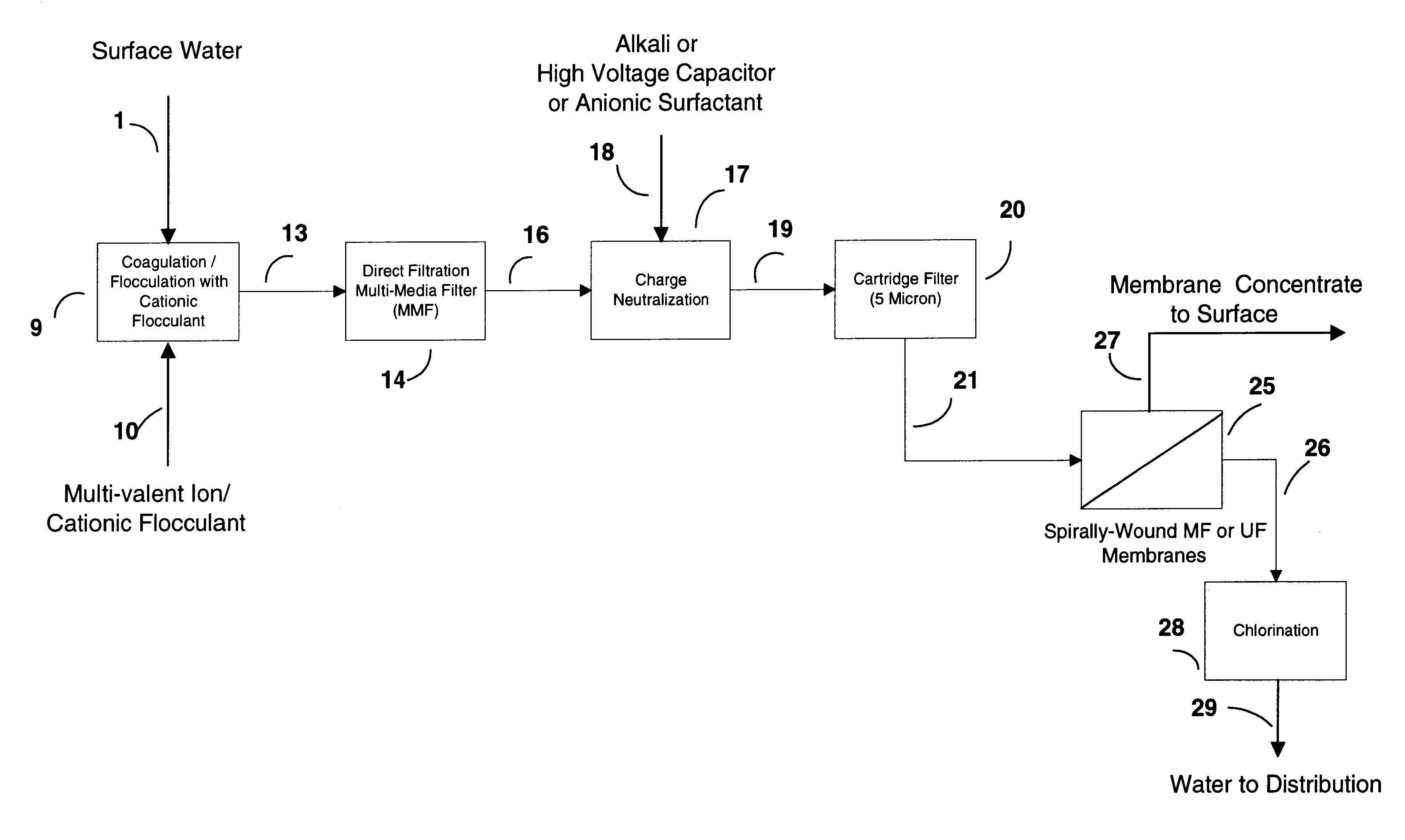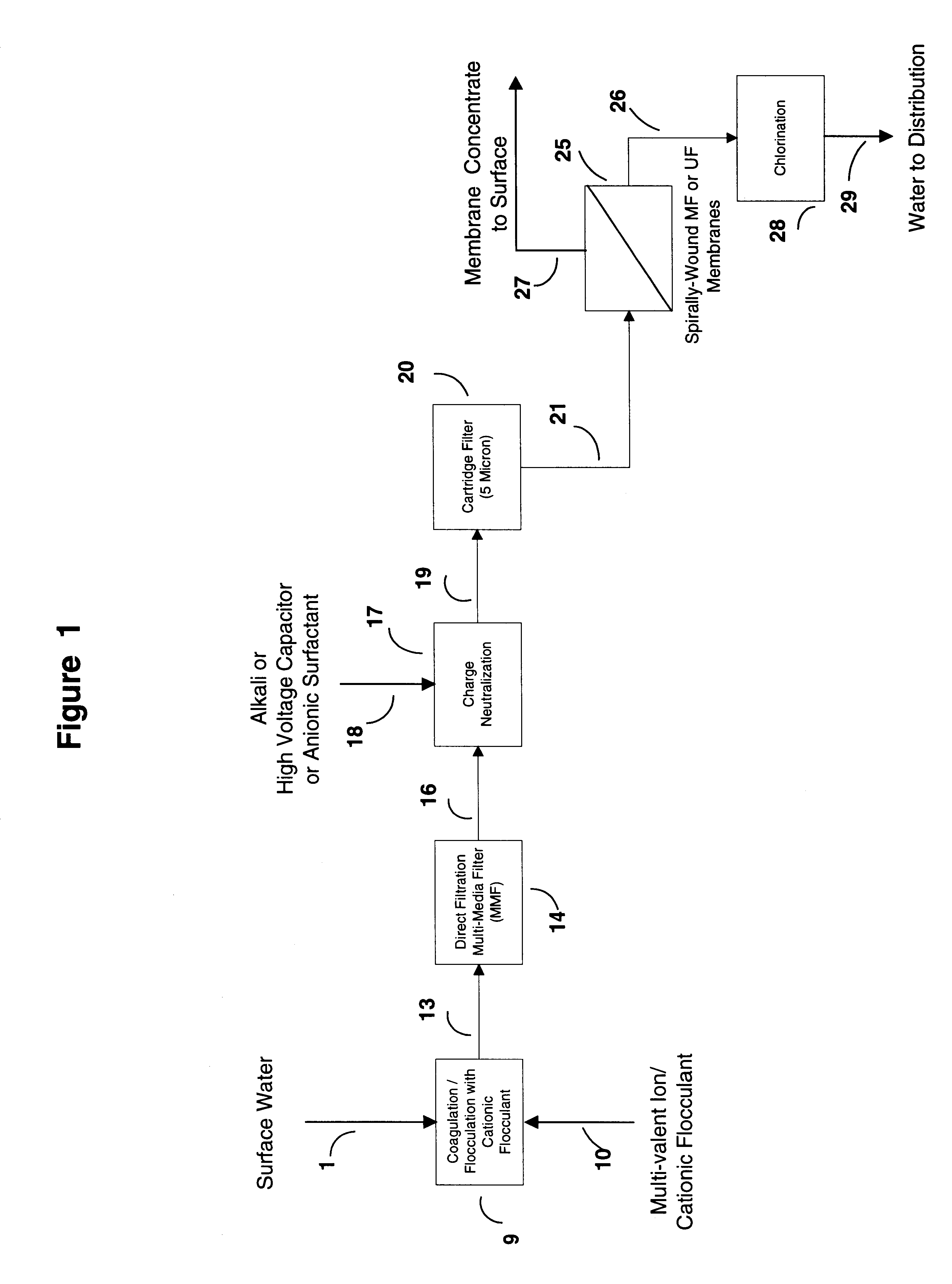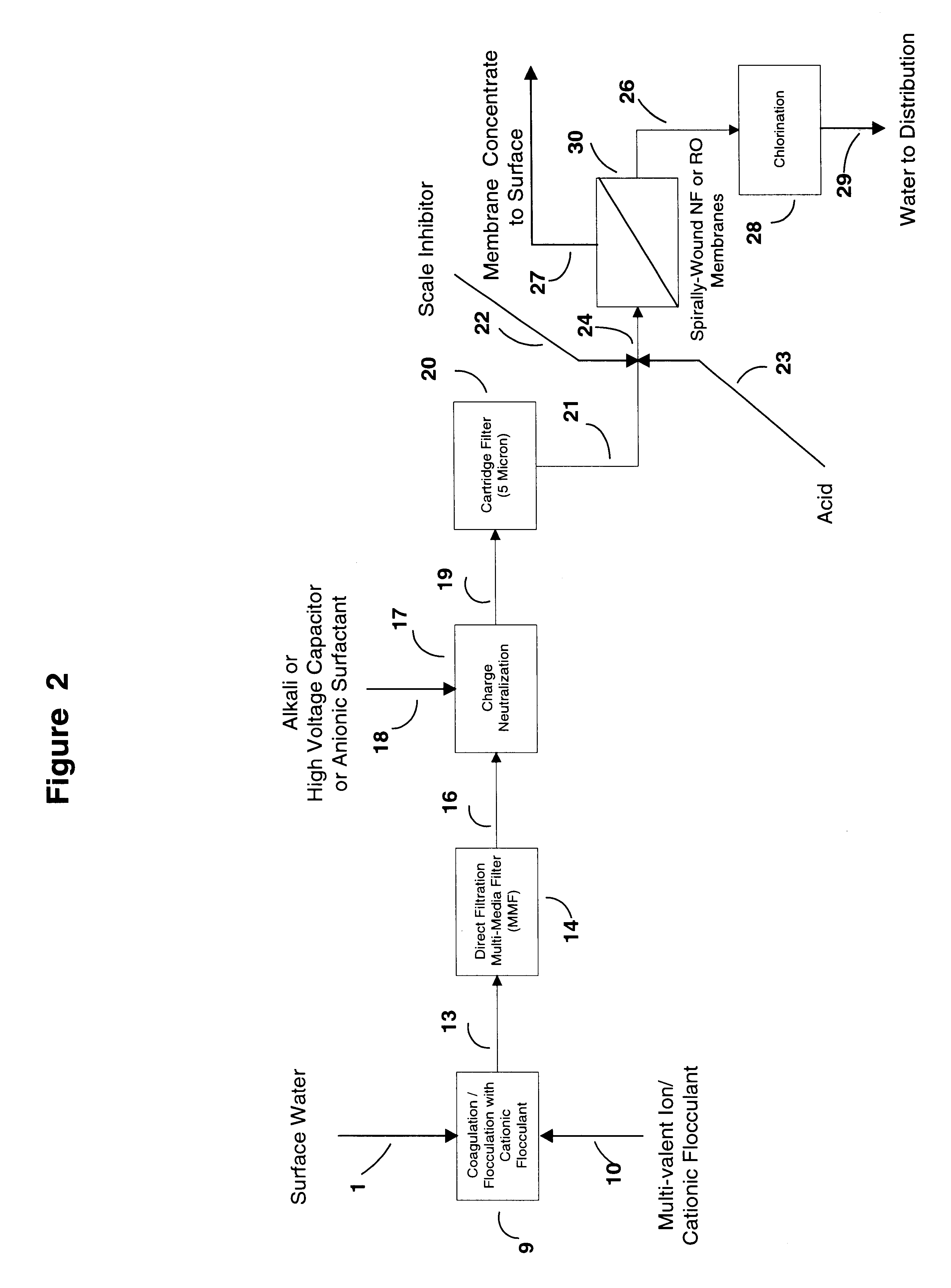Water treatment process for membranes
a technology of water treatment process and membrane, applied in water/sludge/sewage treatment, reverse osmosis, ultrafiltration, etc., can solve the problems of reducing the permeation flux of membranes, difficult to remove, deleterious residual cationic flocculant concentration,
- Summary
- Abstract
- Description
- Claims
- Application Information
AI Technical Summary
Benefits of technology
Problems solved by technology
Method used
Image
Examples
Embodiment Construction
OF MEMBRANE PRE-TREATMENT APPLICATIONS
The problem of contamination of surface water from lakes and rivers with E-Coli, Giadia and Crypto-sporidium pathogens from untreated sewage and farm animal rejects has become a serious health challenge with many townships periodically imposing "boil water" advisories or installing special high-cost hollow fiber or tubular micro-filtration or ultra-filtration membrane systems. Since some of these pathogens can not be destroyed by chlorination and must be removed by physical separation, membrane filtration provides the most effective, safe and reliable approach to produce potable water from contaminated surface water or ground water.
When the potable water sources have high Total Dissolved Solids (TDS), high hardness and / or colour problems, "tighter" membranes namely NF or RO membranes must be used. However, these latter membranes are typically fabricated from spirally-wound membrane flat sheets having different polymer chemistry than the MF and U...
PUM
| Property | Measurement | Unit |
|---|---|---|
| pore size | aaaaa | aaaaa |
| particle size | aaaaa | aaaaa |
| particle size | aaaaa | aaaaa |
Abstract
Description
Claims
Application Information
 Login to View More
Login to View More - R&D
- Intellectual Property
- Life Sciences
- Materials
- Tech Scout
- Unparalleled Data Quality
- Higher Quality Content
- 60% Fewer Hallucinations
Browse by: Latest US Patents, China's latest patents, Technical Efficacy Thesaurus, Application Domain, Technology Topic, Popular Technical Reports.
© 2025 PatSnap. All rights reserved.Legal|Privacy policy|Modern Slavery Act Transparency Statement|Sitemap|About US| Contact US: help@patsnap.com



